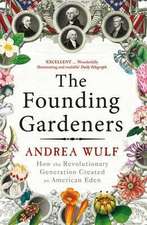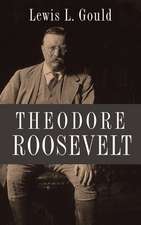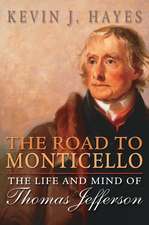Tainted Breeze: Conflicting Worlds: New Dimensions of the American Civil War
Autor Richard B. McCaslinen Limba Engleză Paperback – 31 iul 1997
Din seria Conflicting Worlds: New Dimensions of the American Civil War
-
 Preț: 202.16 lei
Preț: 202.16 lei -
 Preț: 364.44 lei
Preț: 364.44 lei -
 Preț: 130.71 lei
Preț: 130.71 lei -
 Preț: 194.64 lei
Preț: 194.64 lei -
 Preț: 361.36 lei
Preț: 361.36 lei -
 Preț: 321.99 lei
Preț: 321.99 lei -
 Preț: 363.26 lei
Preț: 363.26 lei -
 Preț: 354.62 lei
Preț: 354.62 lei -
 Preț: 362.33 lei
Preț: 362.33 lei -
 Preț: 367.71 lei
Preț: 367.71 lei -
 Preț: 361.73 lei
Preț: 361.73 lei -
 Preț: 364.44 lei
Preț: 364.44 lei -
 Preț: 224.78 lei
Preț: 224.78 lei -
 Preț: 326.25 lei
Preț: 326.25 lei -
 Preț: 327.39 lei
Preț: 327.39 lei -
 Preț: 257.08 lei
Preț: 257.08 lei -
 Preț: 327.00 lei
Preț: 327.00 lei -
 Preț: 362.71 lei
Preț: 362.71 lei -
 Preț: 364.25 lei
Preț: 364.25 lei -
 Preț: 363.48 lei
Preț: 363.48 lei -
 Preț: 326.03 lei
Preț: 326.03 lei -
 Preț: 328.16 lei
Preț: 328.16 lei -
 Preț: 296.24 lei
Preț: 296.24 lei -
 Preț: 292.23 lei
Preț: 292.23 lei -
 Preț: 363.26 lei
Preț: 363.26 lei -
 Preț: 323.35 lei
Preț: 323.35 lei -
 Preț: 472.89 lei
Preț: 472.89 lei -
 Preț: 327.77 lei
Preț: 327.77 lei -
 Preț: 217.14 lei
Preț: 217.14 lei -
 Preț: 176.59 lei
Preț: 176.59 lei -
 Preț: 294.95 lei
Preț: 294.95 lei -
 Preț: 213.65 lei
Preț: 213.65 lei -
 Preț: 221.38 lei
Preț: 221.38 lei -
 Preț: 214.64 lei
Preț: 214.64 lei -
 Preț: 297.60 lei
Preț: 297.60 lei -
 Preț: 257.25 lei
Preț: 257.25 lei -
 Preț: 293.80 lei
Preț: 293.80 lei -
 Preț: 276.74 lei
Preț: 276.74 lei -
 Preț: 299.71 lei
Preț: 299.71 lei
Preț: 181.43 lei
Nou
Puncte Express: 272
Preț estimativ în valută:
34.72€ • 37.12$ • 28.95£
34.72€ • 37.12$ • 28.95£
Carte tipărită la comandă
Livrare economică 18 aprilie-02 mai
Preluare comenzi: 021 569.72.76
Specificații
ISBN-13: 9780807122198
ISBN-10: 080712219X
Pagini: 252
Dimensiuni: 154 x 229 x 14 mm
Greutate: 0.36 kg
Ediția:Revised
Editura: Lsu Press
Seria Conflicting Worlds: New Dimensions of the American Civil War
ISBN-10: 080712219X
Pagini: 252
Dimensiuni: 154 x 229 x 14 mm
Greutate: 0.36 kg
Ediția:Revised
Editura: Lsu Press
Seria Conflicting Worlds: New Dimensions of the American Civil War
Textul de pe ultima copertă
In the early morning hours of October 1, 1862, state militia arrested more than two hundred alleged Unionists from five northern Texas counties and brought them to Gainesville, the seat of Cooke County. In the ensuing days at least forty-four prisoners were hanged, and several other men were lynched in neighboring communities. This event proved to be the grisly climax of a tradition of violence and vigilantism in North Texas that began before the Civil War and lasted long afterward. For this first full-scale history of the Great Hanging, Richard B. McCaslin has consulted a vast array of manuscript collections and government archives, assembling a trove of information on a remote corner of the Confederacy. He offers an account that is both rich in detail and illuminating of the broader contexts of this dramatic event. The irony of the Great Hanging, McCaslin maintains, is that the vigilantes and their victims shared a concern for order and security. When perennial fears of slave insurrection and hostile Indian attacks in North Texas were exacerbated by the turmoil of the Civil War, those residents who saw a return to Federal rule as the way to restore stability were branded as sowers of discord by those who remained loyal to the Confederacy, the manifest symbol of order through legal authority. McCaslin follows the course of mounting tensions and violence that erupted into the massive, hysterical roundup of suspected Union sympathizers. He provides a virtual day-by-day report of the deliberations of the "Citizens Court", a body that became in effect an instrument for mob violence, which spread far beyond Gainesville. In Tainted Breeze, McCaslin moves past the details of why individualparticipants acted as they did in the Great Hanging and examines the influence of such factors as economic conditions and family relationships. He explores not only the deep division the incident caused in the immediate community but also the reactions of northerners (who were generally appalled) and other southerners (who tended to applaud the lynchings). McCaslin also describes how the policies of Presidential Reconstruction stymied attempts to prosecute those responsible for atrocities like the Great Hanging, and how renewed violence in North Texas in fact contributed to the imposition of Radical Reconstruction. Until relatively recently, a tradition of silence regarding the Great Hanging has restricted historical writing on the subject. Tainted Breeze offers the first systematic treatment of this important event. By placing his compelling tale in such a broad context, McCaslin provides a unique opportunity to study the tensions produced in southern society by the Civil War, the nature of disaffection in the Confederacy, and the American vigilante tradition.














